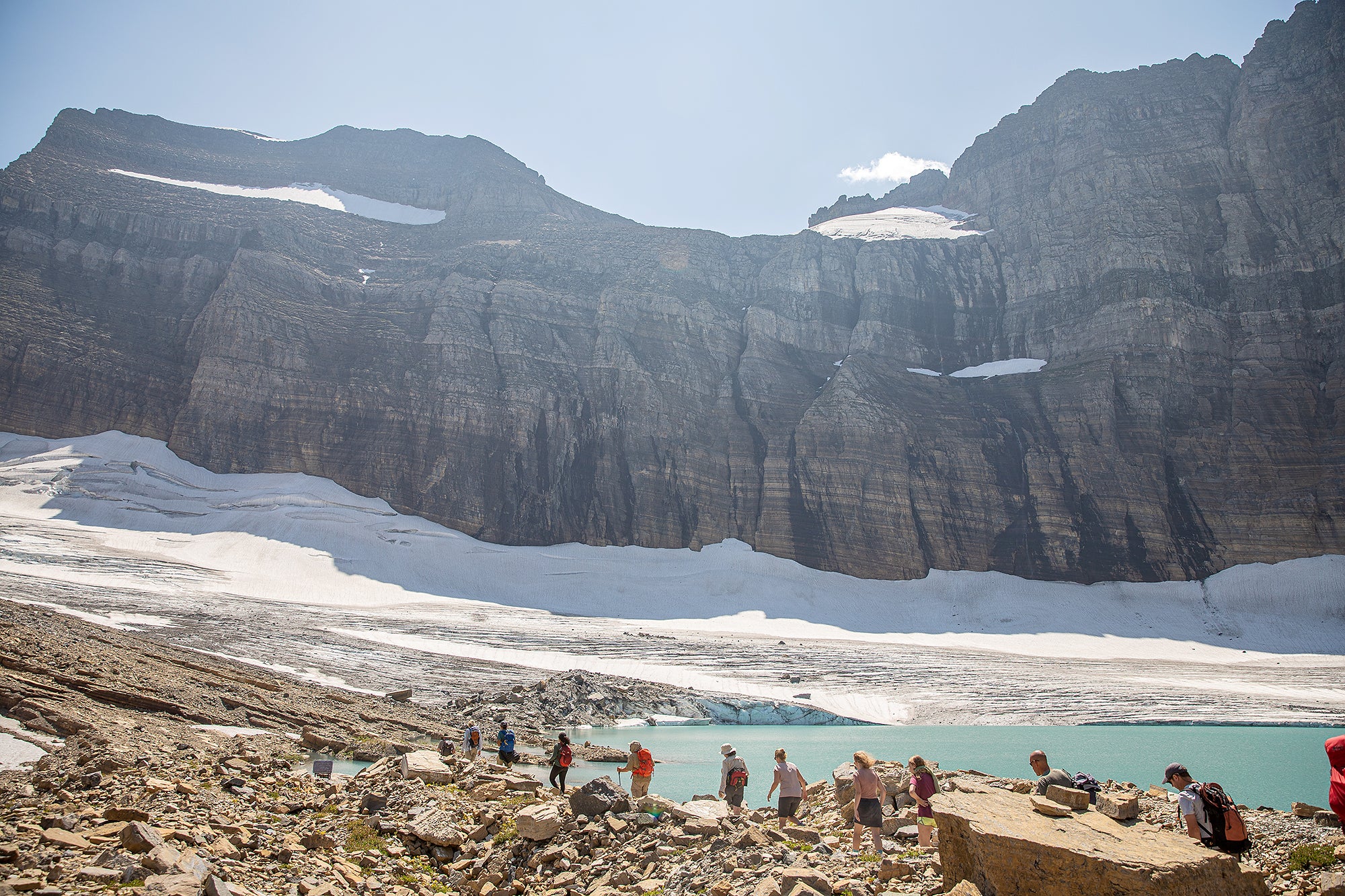A Postcard from Glacier National Park, Where the Glaciers Are Shrinking
Our public lands are showing climate impacts — and a need for change.

This page was published a year ago. Find the latest on Earthjustice’s work.
Last fall, I spent a week in Glacier National Park hiking, using my binoculars to find every animal I could, and getting to know fellow travelers. In our small talk, people were excited to tell me and my friends about the highlights of their trip, spill their secrets on where the best animal spotting is, or share park trivia — did you know the Going-to-the-Sun Road was featured in the opening credits of The Shining? Sadly, another topic that came up often was how few in number and small the park’s glaciers were. People who had been there before were saddened to see how much the glaciers had shrunk since their last visit.
Glacier National Park is warming at nearly two times the global average and is heading toward the loss of its namesake glaciers as a result. It is a reality that the park does not shy away from — at a lookout point, an information board discussed that the average glacier loss over the last 50 years was 39%, with some glaciers losing at least 85% of their size
And the trend isn’t limited to the park. A new mapping across the United States found that about 360 glaciers have melted away entirely or downgraded to lesser landscape features since the mid-20th century. Climate change hasn’t just dried up glaciers but is also drying up plants across the Western U.S., leading to a doubling of large fires between 1984 and 2015. The warming temps are also spurring an increase in pine beetles and subsequent loss in trees and biological carbon sequestration. It is a vicious circle.
It’s hard not to see your place in this world differently as you take in each beautiful vista, or even feel you are a part of a grand design. It is both awe-inspiring and a call to action: We must fight to protect public lands from climate change.
Burning fossil fuels is the key driver of climate change and a quarter of the United States’ climate emissions come from extracting, transporting, and burning fossil fuels on public lands. Our lands.
National Parks like Glacier have significant protections from exploitation and are managed by the National Parks Service. But a much wider set of lands are managed by the Bureau of Land Management, the U.S. Forest Service, and other agencies with varying degrees of protection.
These public lands may border national parks, bringing dirty energy drillers to the doorstep of our parks, contributing to a crisis that affects the entire planet. And our public lands are unique places that support critical wildlife habitat, cultural significance for Indigenous people, outdoor recreation, and clean drinking water.
Instead of being sacrificed to boost oil companies’ profits, public lands should be part of the climate solution. Earthjustice has successfully challenged numerous lease sales across many administrations.
Our fight continues on. We cannot lose our public lands and the ecosystem of life that depends on these wild spaces.